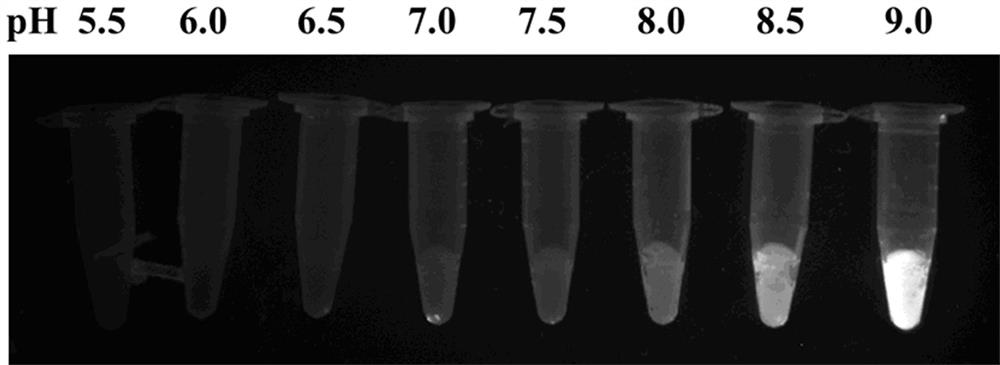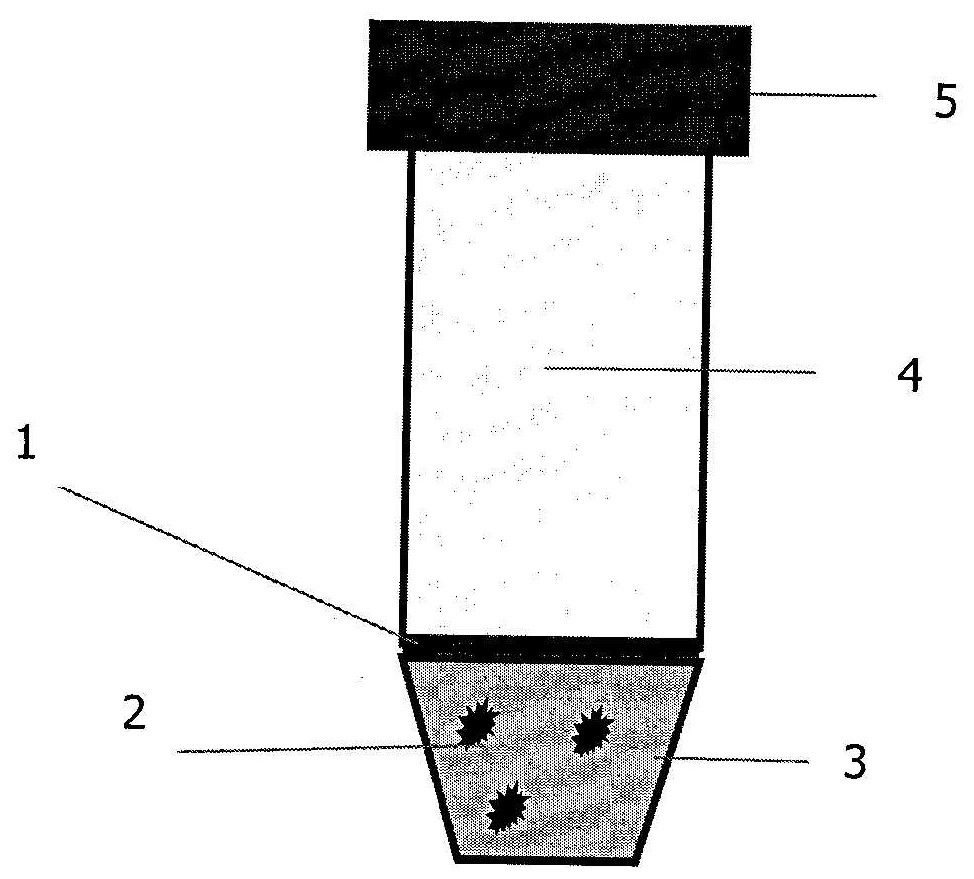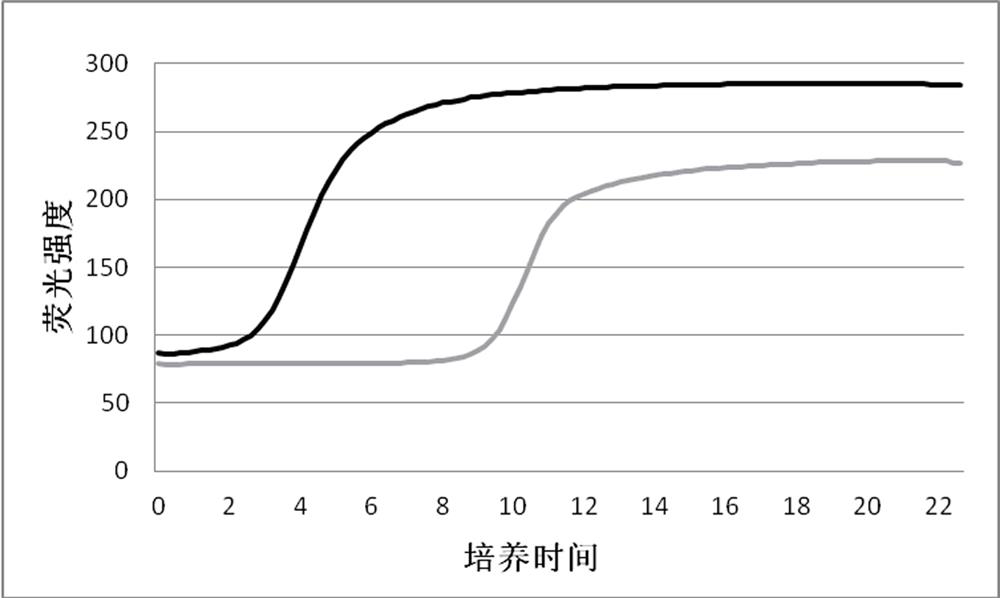A pH-sensitive fluorescent sensor for high-throughput detection of active microorganisms and its construction method
A technology of active microorganisms and fluorescent sensors, which is applied in the field of microbial detection, can solve the problems of low detection throughput, expensive instruments, and large errors in trace microorganism analysis, and achieve the effects of shortened analysis time, high consistency, and rapid detection
- Summary
- Abstract
- Description
- Claims
- Application Information
AI Technical Summary
Problems solved by technology
Method used
Image
Examples
Embodiment 1
[0031] Example 1. Preparation of pH-sensitive fluorescent nanomicelles
[0032] The preparation method of the pH-sensitive fluorescent nanomicelle provided in the embodiment of the present invention includes: using phospholipid polyethylene glycol and 5-(N-hexadecanoyl)amino fluorescent yellow to dissolve in ethanol according to the molar ratio of 1:10~1:50 Mix well, add drop by drop into pure water, and stir well, so that the phospholipid polyethylene glycol self-assembles into nano-micelles, and 5-(N-hexadecanoyl)amino fluorescent yellow transfers the fluorescent signal group due to the effect of the hydrophobic chain immobilized on the nanomicelle surface.
[0033] The final concentration of the fluorescent nano-micelle in the aqueous solution should be 1-10 mg / mL, too high a concentration will make the particle size of the nano-micelle larger, and the particle size of the nano-micelle of the present invention is between 20-200 nm. between.
[0034] The particle size of t...
Embodiment 2
[0036] Example 2. Construction of a pH-sensitive fluorescent sensor
[0037] The construction of the pH-sensitive fluorescent sensor provided by the embodiments of the present invention includes: 1. pH-sensitive fluorescent nanomicelle; 2. Sensing gel; 3. Liquid culture medium; 4. Water phase filter membrane; 5. Sealed upper cover . First, the sensing gel was prepared by using pH-sensitive fluorescent nanomicelles and agar, and placed in figure 2 At the bottom of the special container shown, a 0.22-0.45 μm aqueous phase filter membrane is used to separate the sensing gel from the liquid medium, and a sealed upper cover is used to separate it from the outside world to complete the construction of a pH-sensitive fluorescent sensor.
[0038] The pH-sensitive fluorescent nanomicelles are prepared according to the steps in Example 1. The fluorescent nanomicelles can wrap and fix multiple fluorescent dye molecules to provide high-intensity fluorescent signals, and at the same time ...
Embodiment 3
[0042] Example 3. Real-time detection of Escherichia coli
[0043] The embodiment of the present invention provides a method for detecting Escherichia coli using a pH-sensitive fluorescent sensor. The detection steps include: 1. Sample pretreatment; 2. Put the processed sample into a liquid medium; 3. Put the sensor into a special fluorescence detection 4. Read the fluorescence signal value and obtain the real-time growth curve of microorganisms. The results of the growth curve are as follows: image 3 shown , The black solid line is a high concentration microbial sample, and the gray solid line is a low concentration microbial sample. The results show that the higher the microbial content, the faster the fluorescence signal increases.
[0044] The pre-sample pre-treatment needs to be processed according to the shape of the sample (solid, liquid, etc.), and simple bacterial enrichment treatment is required if necessary.
[0045] The liquid culture medium needs to design a me...
PUM
| Property | Measurement | Unit |
|---|---|---|
| particle diameter | aaaaa | aaaaa |
| pore size | aaaaa | aaaaa |
Abstract
Description
Claims
Application Information
 Login to View More
Login to View More - R&D
- Intellectual Property
- Life Sciences
- Materials
- Tech Scout
- Unparalleled Data Quality
- Higher Quality Content
- 60% Fewer Hallucinations
Browse by: Latest US Patents, China's latest patents, Technical Efficacy Thesaurus, Application Domain, Technology Topic, Popular Technical Reports.
© 2025 PatSnap. All rights reserved.Legal|Privacy policy|Modern Slavery Act Transparency Statement|Sitemap|About US| Contact US: help@patsnap.com



